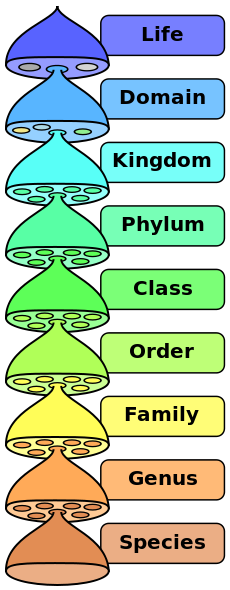
Classification Controversy
When a species is
first classified it is reviewed by specialists and often
times will be moved several times before finding a permanent home. Currently the species Millerex
lithica is under such scrutiny and in the world of snail
classification, its story is proving to be very entertaining.
In 1961, the late Dr. Hubricht, a specialist and
trail blazer in the terrestrial snail world, came across a new
species of snail in Northern Arkansas that he placed into the Genus
Polygyra based on shell description stating that it was a
variation of the P. dorfeuilliana species
(Walsh, 2006). At
this time Hubricht did not give specifics of the shell morphology.
For twenty years, the species existed as
Polygyra lithica until a Doctor of Philosophy student
at the University of Arizona, William Lloyd Pratt Jr. wrote his
dissertation, A Revision of the Land Snail Genus
Polygyra in Texas. Pratt mainly
focused his research on Western Texas, and while focusing on
Polygyra mooreana and Polygyra derfeulliana Pratt
created a new genus, Millerelix, to encompass snails with a
specific
shell variation and a slender penis
(Pratt, 1981). While moving
P. mooreana and P. derfeulliana to the Millerelix
genus, Pratt used the knowledge gathered by Hubricht on P.
lithica and concluded that P. lithica was precisely between P. mooreana and P. derfeulliana
in the shell morphology, therefore reclassified the snail as
M. lithica as it is described on this website (Pratt, 1981).
In 1985, while researching snail specimens
in Arkansas, Dr. Hubricht discovered that the M. lithica
habitat was shared with M. dorfeuilliana, but maintained his
stance that they were two different species, stating that the two snails
held different niches in the same environment, implying no cross breeding was taking place (Walsh,
2006).
This research sparked the interest of two scientists, Walsh and Coles,
who in 2006 wrote, Daedalochila lithica
and Daedalochila dorfeuilliana (Gastropoda:
Polygyridae) in Arkansas, USA: morphology, distribution, and
habitat, a paper that for the first time included
work with the specific snail M. lithica. Through work with
specimens, Walsh and Coles concluded that these snails did not
belong in the Millerelix genus based on too much of a
fluctuation of penis size and the presence of ridges in the terminal
penis called papilla (Walsh, 2006). Walsh and Coles concluded that
M. lithica should be moved to the genus Daedalochila
based on their belief that the use of the genus Millerelix
should be reassessed. In the conclusion of their paper, Walsh and
Coles acknowledge that Pratt's creation of the genus Millerelix
is probably valid, but feel that it has lost credit through miss-use
by other scientists
(Walsh, 2006).
Upon the creation of this website, it was
concluded that Millerelix lithica is the most accurate
classification of the species. Although Walsh and Coles are pushing to move the
species to the genus Daedalochila, they did not actually
dissect a M. lithica specimen because a wet-specimen for
this species was not available. Instead of going to the field to
find specimens they used the results
of the dissection of the relative
species D. dorfeuilliana
(Walsh, 2006).
This insight into the world of classification illustrates the
scrutiny that new classifications go under and shows the dedication
of scientists to never settle for the easy answer, but instead to
push for the truth.
Click here to continue reading to learn about the habitat of M. lithica
home
|
classification |
controversy
| habitat
| adaptation
| nutrition
| reproduction
| references
|
contact
last updated November 29, 2012
